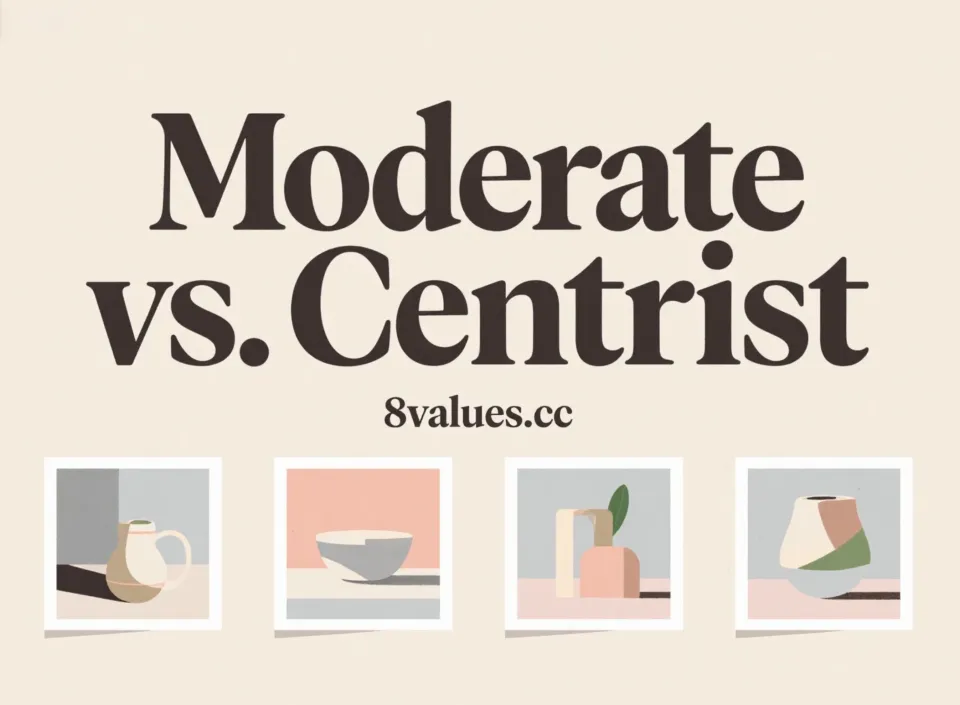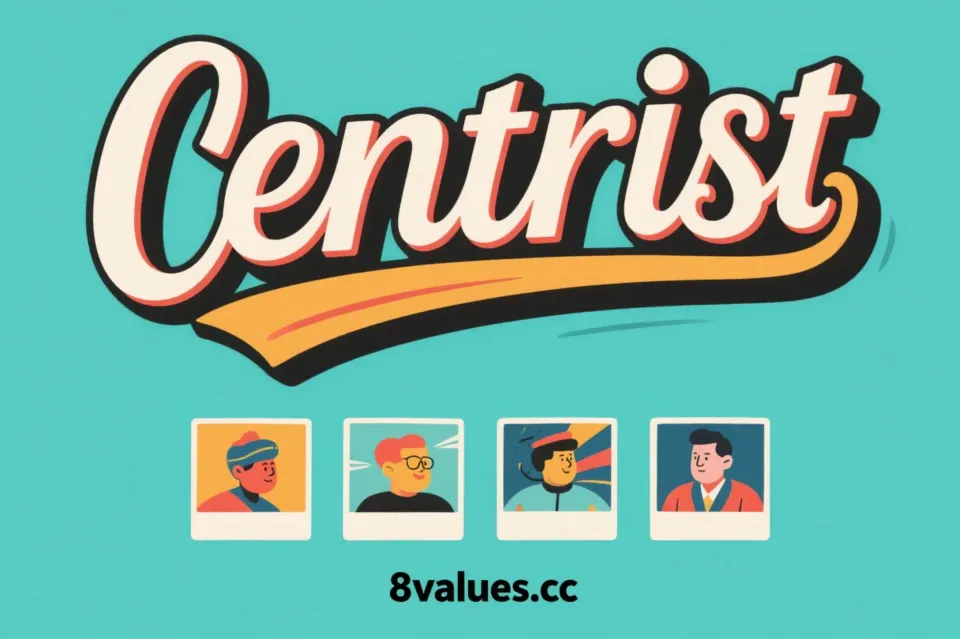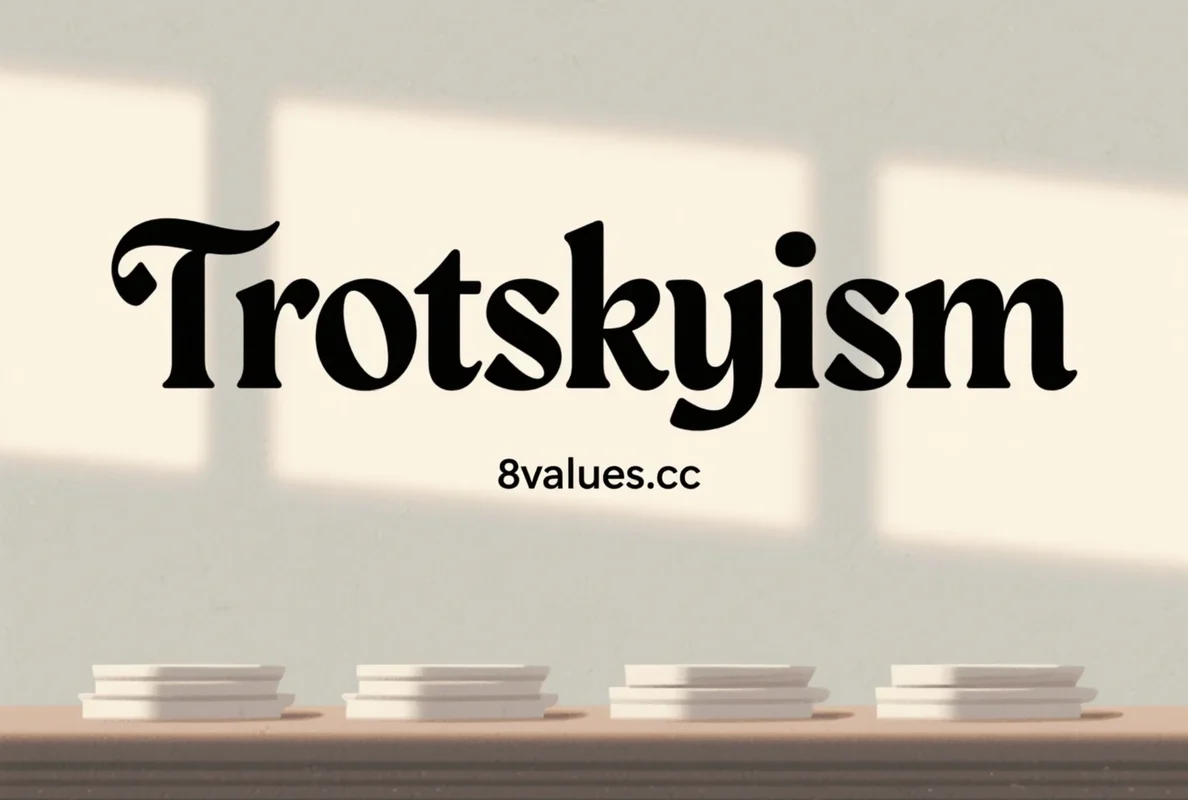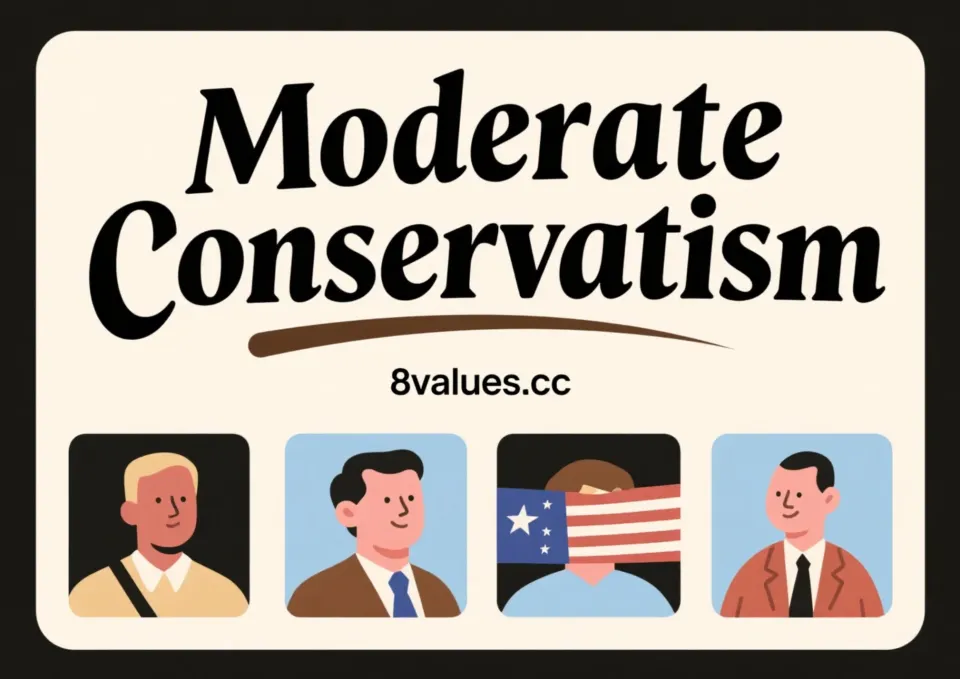Moderates and Centurists in the Political Spectrum: Analysis of Political Positions
Deeply understand moderates and centrists in the political context. This article will reveal the core differences and similarities between these two political positions and analyze their role in shaping policies and promoting governance. Take the political tendency test now and find your place in the complex political spectrum.
In today's political discourse, " moderate " and " centric " are often used interchangeably to describe individuals or positions that avoid ideological extremes, tend to compromise, pragmatism, and balance rather than radical change. Both views reject marginalization of left-wing politics and emphasize practical solutions, bipartisan cooperation and progressive reform. However, there are subtle distinctions between them in terms of ideological positioning , modes of change and partisanship . Understanding these nuances is crucial to in-depth exploration of the political landscape and individual political tendencies.
Common traits between moderates and centrists
Although moderates and centrists differ, they share many core ideas, which makes the two easily confused in many cases.
- Resist extremes : Both prioritize political polarization and focus on seeking middle ground policies.
- Pragmatism takes precedence over ideology : they all value evidence-based decision-making, consensus building and cross-party collaboration.
- Role in governance : Moderates and centrists often act as mediators in a divided political system, helping to prevent the emergence of deadlocks.
- Advocate balanced and pragmatic policies : They both advocate the adoption of balanced and pragmatic policy solutions.
Moderates: Seeking balance among parties
Moderates refer to those whose political views are between the left and right wings of the political spectrum. They tend to seek solutions that blend the various aspects of progressive and conservative policies. Moderates are usually affiliated with a major political party, but try to soften the party’s extreme stance rather than abandoning its core beliefs altogether.
Key features of moderates:
- Support for balanced and progressive reform : Moderates tend to support slow and gradual change to avoid drastic political shifts.
- Openness to cross-party compromise : They are willing to compromise between parties and seek consensus.
- Oppose extreme partisan politics and ideology : moderates do not agree with extreme partisan positions.
- Emphasize pragmatic, problem-based decision-making : They focus more on making practical decisions based on specific issues than strictly following ideology.
Potential effects of moderate approaches:
While moderate political approaches can lead to gradual reform and avoid extreme or sudden policy changes, their excessive focus on compromise can sometimes lead to impasse and stagnation . Especially in times of highly polarization, moderates may find themselves in a deadlock and need to fight for concessions from opposing sides. Furthermore, to appease both sides and prevent any bold or progressive policies, moderates may sometimes be criticized for sacrificing more effective actions for compromise.
Century: Pursuing true neutrality and policy integration
The centrists believe in the true doctrine of moderate politics , and their political beliefs are usually roughly equal to the distance between the two ends of the political spectrum. Century is less about finding compromises between partisan policies , and more about actively advocating policies that incorporate multiple ideological elements .
Key features of centrists:
- Integrating conservative and progressive policies : Based on the assessment of the problem, the centrist will adopt a mixture of conservative and progressive policies.
- Believe in pragmatic governance over ideological loyalty : they prioritize actual governance effects rather than loyalty to a single ideology.
- Prefer evidence-based policymaking : Centres prefer to formulate policies based on facts and evidence.
- Reject polarized political rhetoric : They reject extreme, divided political rhetoric.
- Often independent from party : Many centrists reject clear partisanship, and they may position themselves as independents or nonpartisans to remain neutral.
Potential effects of centrist approach:
By integrating left and right wing ideologies, centrists often support policies that naturally bridge differences. However, this fusion may face similar problems to moderates. The centrist policy may appear to be "diluted" or "incomplete" and cannot fully satisfy those who firmly support a party's program. In addition, centrists need to carefully balance their positions because they do not align with either party, and any behavior that is biased towards a certain party can undermine the trust of their voters. Critics sometimes believe that the centrist stance, under the guise of the pursuit of neutrality, may inadvertently consolidate the existing power structure .
The core difference between moderates and centrists
While moderates and centrists have many things in common, their approaches may differ considerably in governance and policy choices.
| aspect | Moderate | Centrist |
|---|---|---|
| Ideological positioning | A qualifier within the party softens the party’s extreme stance without giving up core beliefs. | Independent ideology, equidistant from the left and right wings, focusing on the "real middle" of the political spectrum. |
| Methods of change | Inclines to progressive reform and maintain the status quo to avoid disruptions; compromises can sometimes lead to deadlocks. | The search for balanced, pragmatic solutions may include an innovative synthesis of opposing views; it may show "boldness" in transcending traditional differences. |
| Parties belonging | Often allied with a major political party, but promoted a moderate version of its platform. | Usually independent or lean toward third parties ; avoid strong partisan loyalty to remain neutral. |
| Policy orientation | Seek slow and gradual changes to avoid drastic political shifts; prioritize compromise and bipartisan cooperation. | Actively integrate policies from multiple political ideologies to find the best solutions regardless of their original source. |
| Decision-making focus | More inclined to adjust your position flexibly to build consensus. | It is more likely to take a firm stance based on the effectiveness of the policy. |
Why are these differences crucial?
Understanding the difference between moderates and centrists in the current polarized political environment has profound implications for our analysis of voting tendencies and policy outcomes. Moderates within the party can push candidates toward the middle, and centrists attract independent voters who are tired of party struggles.
It should be noted, however, that the “moderate centrist” is not always a unified whole; people who claim to be moderate or centrist may hold very different views on issues such as economy or immigration, and are not a single political group. Still, whether you tend to be moderate or centrist, the key is to advocate solutions that go beyond ideological differences .
Explore your political stance: 8values Political tendency test
There is no one-size-fits-all solution in the political world. In an era of growing partisan divisions, it is more important than ever to find ideas that align with your values. Understanding your own beliefs that are more moderate or centrist, can help you make informed decisions when voting. Supporting those who prioritize evidence-based policies , compromises and balanced governance will help us jointly create a political system that serves the people.
Whether you’re a moderate, a centrist, or explore other political ideas, it’s the key to finding solutions that promote cooperation, reduce polarization, and ensure policies truly reflect the diverse needs of citizens.
Want to have a deeper understanding of your place in the political spectrum? Join our free 8 Values Political Prone Test now to explore your unique political stance and read more exciting articles from the official blog to broaden your political horizons!






